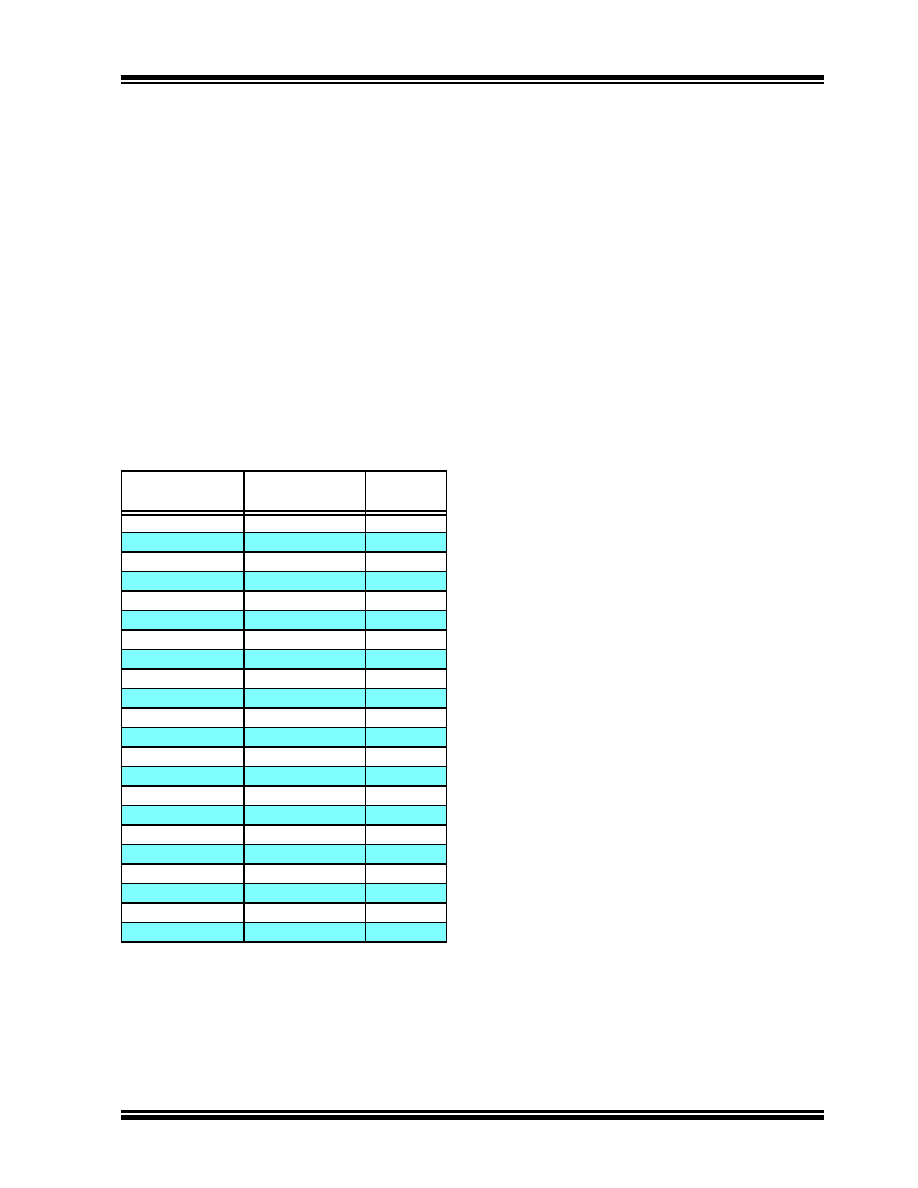- 您現(xiàn)在的位置:買賣IC網(wǎng) > PDF目錄3773 > MCP23018-E/SO (Microchip Technology)IC I/O EXPANDER I2C 16B 28SOIC PDF資料下載
參數(shù)資料
| 型號(hào): | MCP23018-E/SO |
| 廠商: | Microchip Technology |
| 文件頁(yè)數(shù): | 54/56頁(yè) |
| 文件大?。?/td> | 0K |
| 描述: | IC I/O EXPANDER I2C 16B 28SOIC |
| 標(biāo)準(zhǔn)包裝: | 27 |
| 接口: | I²C |
| 輸入/輸出數(shù): | 16 |
| 中斷輸出: | 是 |
| 頻率 - 時(shí)鐘: | 3.4MHz |
| 電源電壓: | 1.8 V ~ 5.5 V |
| 工作溫度: | -40°C ~ 125°C |
| 安裝類型: | 表面貼裝 |
| 封裝/外殼: | 28-SOIC(0.295",7.50mm 寬) |
| 供應(yīng)商設(shè)備封裝: | 28-SOIC |
| 包裝: | 管件 |
| 產(chǎn)品目錄頁(yè)面: | 684 (CN2011-ZH PDF) |
第1頁(yè)第2頁(yè)第3頁(yè)第4頁(yè)第5頁(yè)第6頁(yè)第7頁(yè)第8頁(yè)第9頁(yè)第10頁(yè)第11頁(yè)第12頁(yè)第13頁(yè)第14頁(yè)第15頁(yè)第16頁(yè)第17頁(yè)第18頁(yè)第19頁(yè)第20頁(yè)第21頁(yè)第22頁(yè)第23頁(yè)第24頁(yè)第25頁(yè)第26頁(yè)第27頁(yè)第28頁(yè)第29頁(yè)第30頁(yè)第31頁(yè)第32頁(yè)第33頁(yè)第34頁(yè)第35頁(yè)第36頁(yè)第37頁(yè)第38頁(yè)第39頁(yè)第40頁(yè)第41頁(yè)第42頁(yè)第43頁(yè)第44頁(yè)第45頁(yè)第46頁(yè)第47頁(yè)第48頁(yè)第49頁(yè)第50頁(yè)第51頁(yè)第52頁(yè)第53頁(yè)當(dāng)前第54頁(yè)第55頁(yè)第56頁(yè)

2008 Microchip Technology Inc.
DS22103A-page 7
MCP23018/MCP23S18
1.2
Power-on Reset (POR)
The on-chip POR circuit holds the device in reset until
VDD has reached a high enough voltage to deactivate
the POR circuit (i.e., release the device from reset).
The maximum VDD rise time is specified in the
electrical specification section.
When the device exits the POR condition (releases
reset), device operating parameters (i.e., voltage,
temperature, serial bus frequency, etc.) must be met to
ensure proper operation.
1.3
Serial Interface
This block handles the functionality of the I2C
(MCP23018) or SPI (MCP23S18) interface protocol.
The MCP23X18 contains twenty two (22) individual
registers (eleven [11] register pairs) which can be
addressed through the Serial Interface block (Table 1-
TABLE 1-1:
REGISTER ADDRESSES
1.3.1
BYTE MODE AND SEQUENTIAL
MODE
The MCP23X18 has the ability to operate in “Byte
Mode” or “Sequential Mode” (IOCON.SEQOP). Byte
mode and sequential mode are not to be confused with
I2C byte operations and sequential operations. The
modes explained here relate to the device’s internal
address pointer and whether or not it is incremented
after each byte is clocked on the serial interface.
Byte Mode disables automatic address pointer incre-
menting.
When
operating
in
Byte
Mode,
the
MCP23X18 does not increment its internal address
counter after each byte during the data transfer. This
gives the ability to continually access the same address
by providing extra clocks (without additional control
bytes). This is useful for polling the GPIO register for
data changes or for continually writing to the output
latches.
A special mode (Byte Mode with IOCON.BANK = 0)
causes the address pointer to toggle between associ-
ated A/B register pairs. For example, if the BANK bit is
cleared and the address pointer is initially set to
address 12h (GPIOA) or 13h (GPIOB), the pointer will
toggle between GPIOA and GPIOB. Note, the address
pointer can initially point to either address in the regis-
ter pair.
Sequential Mode enables automatic address pointer
incrementing. When operating in Sequential Mode, the
MCP23X18 increments its address counter after each
byte during the data transfer. The address pointer auto-
matically rolls over to address 00h after accessing the
last register.
These two modes are not to be confused with single
writes/reads and continuous writes/reads which are
serial protocol sequences. For example, the device
may be configured for Byte Mode and the master may
perform
a
continuous
read.
In
this
case,
the
MCP23X18 would not increment the address pointer
and would repeatedly drive data from the same loca-
tion.
1.3.2
I2C INTERFACE
1.3.2.1
I2C Write Operation
The I2C write operation includes the control byte and
register address sequence, as shown in the bottom of
Figure 1-1. This sequence is followed by eight bits of
data from the master and an Acknowledge (ACK) from
the MCP23018. The operation is ended with a stop (P)
or restart (SR) condition being generated by the mas-
ter.
Data is written to the MCP23018 after every byte trans-
fer. If a stop or restart condition is generated during a
data transfer, the data will not be written to the
MCP23018.
Both “byte mode” and “sequential mode” are supported
by the MCP23018. If sequential mode is enabled
(default), the MCP23018 increments its address
counter after each ACK during the data transfer.
Address
IOCON.BANK = 1
Address
IOCON.BANK = 0
Access to:
00h
IODIRA
10h
01h
IODIRB
01h
02h
IPOLA
11h
03h
IPOLB
02h
04h
GPINTENA
12h
05h
GPINTENB
03h
06h
DEFVALA
13h
07h
DEFVALB
04h
08h
INTCONA
14h
09h
INTCONB
05h
0Ah
IOCON
15h
0Bh
IOCON
06h
0Ch
GPPUA
16h
0Dh
GPPUB
07h
0Eh
INTFA
17h
0Fh
INTFB
08h
10h
INTCAPA
18h
11h
INTCAPB
09h
12h
GPIOA
19h
13h
GPIOB
0Ah
14h
OLATA
1Ah
15h
OLATB
相關(guān)PDF資料 |
PDF描述 |
|---|---|
| MCP23018-E/SP | IC I/O EXPANDER I2C 16B 28SDIP |
| MCP23017-E/SP | IC I/O EXPANDER I2C 16B 28SDIP |
| MCP23S08-E/ML | IC I/O EXPANDER SPI 8B 20QFN |
| MCP23S09-E/SO | IC I/O EXPANDER SPI 8B 18SOIC |
| MCP23009-E/P | IC I/O EXPANDER I2C 8B 18DIP |
相關(guān)代理商/技術(shù)參數(shù) |
參數(shù)描述 |
|---|---|
| MCP23018T | 制造商:MICROCHIP 制造商全稱:Microchip Technology 功能描述:16-Bit I/O Expander with Open-Drain Outputs |
| MCP23018T-E/MJ | 功能描述:接口-I/O擴(kuò)展器 16B I/O Expander I2C interface RoHS:否 制造商:NXP Semiconductors 邏輯系列: 輸入/輸出端數(shù)量: 最大工作頻率:100 kHz 工作電源電壓:1.65 V to 5.5 V 工作溫度范圍:- 40 C to + 85 C 安裝風(fēng)格:SMD/SMT 封裝 / 箱體:HVQFN-16 封裝:Reel |
| MCP23018T-E/SO | 功能描述:接口-I/O擴(kuò)展器 16B I/O Expander I2C interface RoHS:否 制造商:NXP Semiconductors 邏輯系列: 輸入/輸出端數(shù)量: 最大工作頻率:100 kHz 工作電源電壓:1.65 V to 5.5 V 工作溫度范圍:- 40 C to + 85 C 安裝風(fēng)格:SMD/SMT 封裝 / 箱體:HVQFN-16 封裝:Reel |
| MCP23018T-E/SP | 制造商:MICROCHIP 制造商全稱:Microchip Technology 功能描述:16-Bit I/O Expander with Open-Drain Outputs |
| MCP23018T-E/SS | 功能描述:接口-I/O擴(kuò)展器 16-bit I/O Expander I2C interface RoHS:否 制造商:NXP Semiconductors 邏輯系列: 輸入/輸出端數(shù)量: 最大工作頻率:100 kHz 工作電源電壓:1.65 V to 5.5 V 工作溫度范圍:- 40 C to + 85 C 安裝風(fēng)格:SMD/SMT 封裝 / 箱體:HVQFN-16 封裝:Reel |
發(fā)布緊急采購(gòu),3分鐘左右您將得到回復(fù)。